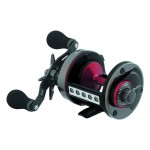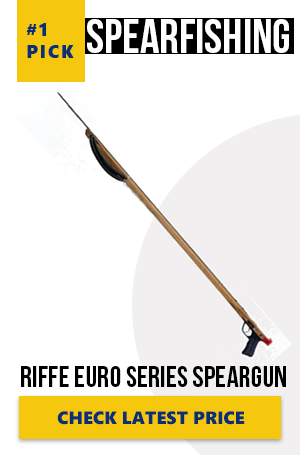There is no right or wrong time to go saltwater fishing, however. There are recommended times of the day that will result in a better catch. In this article, we will cover weather patterns, time of day, winds, rains, tides and so much more.
So if you like to get technical when it comes to fishing then be sure to read to the very end.
Before we get started, let’s go over some basic frequently asked questions.
Specifically, if the conditions and tidal patterns are favorable, dawn or dusk are usually the best time to go saltwater fishing. To see which number of hours during the day will be the best fishing tide times, remember to consult a saltwater tide map.
You sure can, however. It may not yield the best results. It’s great if you want to catch live bait.
A key to knowing where to fish after heavy rain days is knowing how local weather impacts the fish, and their reaction to it. Generally, since saltwater is denser than fresh water, the depletion of salinity would drive most fish deeper. So fish with higher salinity that are more relaxed would go deeper.
now that’s out of the way let’s get to the technical details when it comes to the best time to go saltwater fishing.
feel free to use our table of content menu below to navigate throughout this page.
Weather Patterns and Barometric Pressure
If you’re looking for the best time to go saltwater fishing, you need to consider measuring weather patterns, temperature, and barometric pressure to determine if the fish will be nearby or not. The arrival of a front that allows warm or cool air will affect the efficiency of your fishing methods.
The best time would be during the moment with a front comes through and while the barometric pressure is lowering. After this phenomenon, the fish will have to re-adjust to the change in their environment conditions before they will be able to actively feed again.
Times of Day
For advanced anglers, the best time to fish would be during dusk or dawn and if the tidal movements and weather are favorable. It is also best to consult to your tide chart and see which range of hours during the day will be the ideal fishing tide times.
Early morning

For many experienced fishermen, early morning is a great time to fish as it is always a guarantee of a good catch. This is because the environment allows increased activity for baitfish. Specifically, the low-light conditions during sunrise allow baitfish to move around freely.
Late Afternoon

Similar benefits during the early morning, late afternoon or during sunset provide lower light levels that creates excellent conditions especially if you’re using topwater lures.
Night

Fishing during the night has its advantages as well. That is because there is less disturbance in the water due to fewer fishermen being present. But other than that, the conditions during the night causes fish to increase their overall activity. Most fish would go into a feeding frenzy which is the ideal time for you to cast your bait.
Wind

The wind is a huge factor that affects the success in fishing as the wind pushes bait along with its direction. With the bait being followed by the fish, it would be difficult to get it under control during a windy day. If you decide to fish during a windy day, find a spot where you have to cast into the wind. Also, if fishing from a boat, look for a sheltered shore and cast with the wind.
Fronts

Changing weather patterns and storms affect your success chances as fish are very particular with the changes to the barometric conditions of their environment. If there’s plenty of fish in the area, the feeding increases during the hours just before a cold front. However, it will slow down whenever a storm hits a front. It would be best to leave the cold front for a day or two.
Warmer fronts, on the other hand, causes the surface water temperature to rise. As a result, fish would often enter into a feeding frenzy. This is mostly observed during winter as sluggish fish starts to feed actively during a warming trend. Most of the feeding activity takes place near a warm surface which makes it a good place to cast the bait.
Cloud Cover

Fishing during cloudy days would likely to increase your chances of getting a good haul. Since clouds create a low-light condition, it allows fish to roam and look for food more than during brighter days. They will be likely to be scattered throughout the waterways and not looking for structures to hide behind.
Rain

One of the best times to fish would be during warm spring or summer with light rain. As most experienced fishermen would say, rain helps hide their presence among fish since the rain breaks up the view through the water surface. This is especially true regardless if you’re fishing ashore, wade or in a boat. Additionally, rain also washes bait and insects into the water, adding extra time on feeding periods.
However, fishing during hard rain conditions should not be considered. Heavy rains create muddy water which makes it a lot difficult to find bait or lures. Also, the heavy runoff would cause the fish to clog their gills. Most importantly, fishing during heavy rains makes it difficult to find or maintain a comfortable position. High water levels create waves and rapids that make it a dangerous situation even for seasoned fishermen.
Best Time to Fish in Sea
It all boils down to the type of fish you’re going after. In general, the best time to go out into the ocean would be during dusk or dawn. However, if you’re going to go for daytime fishing, you should understand how tides affect fish feeding cycles as it will aid you to better locate and improve your chances of getting a bite.
Usually, rising tides and high tide is the best time to fish in the shores during the day. Some fish would prefer hunting during the lower tides or when the tides are turning.
Saltwater and Tides

If you’re going to fish in saltwater and brackish water, it is necessary to check for tide information in your local newspaper or fishing shop. Tides would lower or raise the water level in about 2 times a day. This affects how the fish will be feeding and where they will be.
Saltwater tides
In saltwater, tides influence the water level that a shallow spot might hold fish when the tides rise. The best time to fish is during running tides as the bait moves and provoke active feeding especially for coastal fish.
Brackish Water Tides
It is also important to check changing tides and finding the right areas to fish in brackish water. These are coastal water that has a mix of fresh and saltwater but still are affected by the tides.
How Do Tides Affect Fish?
The tidal movement affects where different fish species congregate and feed. Understanding how tidal movements affect these factors increases your chance of getting a good catch. It will be easier to know where and when the fish will be.
It is generally known that tides cause currents. And the current is the flow of water or movement which provides the fish their meal. The feeding patterns of fish is highly affected by the current and tide movements.
In shallow waters, the effect of the tide is at its strongest. You’ll be able to observe that closely particularly in harbor habitats, bays, estuarine, and islands that have reefs which the tide pass through narrow channels. Deep waters are affected by tides as well. The tides create water movements particularly a small whirlpool that causes nutrients and food for small fish to cluster.
Fish also takes advantage of structures like rocks and reefs that interrupts the water flow during tidal movements. They tend to gather where the food was concentrated and enter into a feeding mode whenever the tide starts moving again. Usually, smaller fish and organisms are washed along with the rising tide. And wherever they ended up causes bigger fish to follow until the food source is depleted.
Locating Fish in the Tides
Locating where the fish group during tide moments increases your success in fishing whether you’re fishing at anchor or drifting. However, you need to keep in mind that fish may also move away from where the food concentration is when the tide is moving. When the fish turns and move along, you need to be prepared as well.
A good fishing spot can produce a consistent catch for quite some time especially during low tide. When moving during high tide, look for tidal outflow areas as fish tend to concentrate and move to deeper holes along creeks and rivers. It is also a good practice to know creek holes and places on the outside bend of the creek beforehand, so you don’t have to wander whenever the tide changes.
Fishing Tips during High and Low Tides
Experienced fishermen would use the tide to their advantage. It may take some time to master the skill, but when you do, you’ll find it easier to go out fishing. Therefore, it is important to learn which tide to fish and where to go. Here are a few tips to follow that are proven useful.
1. It is a good practice to measure the time fishing whenever the tide is running. Most fish would tend to bite more when the tidal flow is at the peak during the outgoing or incoming phase.
2. It’s a good technique to fish between the deeper water beyond the end of the flat then cast out rather than moving onto the flat along with the rising tide.
3. When fishing in estuaries and harbors, position yourself where the feeder channels enter the main body of water. As the tide drops, the fish is expected to move back to deeper waters. You’ll have a good chance to intercept them as they go back to the channels and guys.
In general, the best time to fish is when the tide changes. The water movement forces the fish to relocate in predictable locations where there’s food. Use this information to your advantage and you’ll have a successful fishing experience and a bountiful catch.
Best Season to Fish in the Pond
Many game fish prefer a season or specific time of year where they cluster in a particular area. Water temperature, feeding habits, and mating habits are patterns that will aid you on how to fish.
Winter

The greatest challenge for fishermen. Fishing during winter is the toughest thing to do even for experienced anglers. Most of them won’t even go out fishing during this season. For one, day temperatures at rivers and lakes would be around 7° Celsius or even below. Sitting in the cold outside in your boat is not the best feeling in the world.
Although, some fish can bite even at cold temperatures. Bass is a cold-blooded fish that’s still actively visible during winter. And since their metabolism is slower, they tend to be sluggish and makes them likely the easiest catch during winter.
Spring

Spring is a good season for fishing especially when water temperatures go above 10° C. This is the time when fish starts to search and visit shallow areas to spawn.
When the spawning period begins, the weather plays an important role and determines the chance of you getting a good bite. When the temperature hits between 10° to 18° Celsius, fish moves up from deep waters which makes them easier to catch. However, the water temperature on ponds may change easily due to their size.
It is also important to note that cold fronts decrease the chances of getting a bite. That is because fish will have to wait for water temps to rise. If you find this time to be troublesome, move along entrance points to fish.
Summer

Fishing in the summer can be a challenge but not the worst thing. During summer, temperatures would start to climb over 26° C and would like to cause fish groups to dissipate. They tend to go into deeper water to find the ideal temperature.
However, summer is the best time to catch bigger fish, particularly in muddy ponds. That is because the density of the water is higher and the shallows can get warmer pretty easily. Bigger fish find it comfortable to visit banks during summer. The problem that most fishermen face is weeds. So, if you’re planning to go for summer fishing, it is best to do it on a canoe, kayak, or a small boat.
Autumn

Fishing during autumn can be relatively easy as fish can be more abundant. Fishes such as bass start to feed and prepares for the upcoming winter. You’ll be expecting them on shallow waters and baitfish tends to move during this time of year.
Additionally, another factor that makes fishing in autumn a lot easier is the lack of oxygen at deeper water levels. This makes deep-dwelling fishes sluggish and less active. And when they go to the surface, they won’t be putting much of a fight. However, if you find yourself empty-handed during this season, it is best to look for warm spots or during afternoon hours when low-light conditions are met.
Conclusion
Best Time to Go Saltwater Fishing would be during dusk or dawn. Always remember to keep all-weather, tidal movement, etc into consideration.
Now that you know the Best Time to Go Saltwater Fishing let your adventure begin! However, keep in mind the Best Time to Go Saltwater Fishing isn’t the only variable that you’d want to consider.
If you enjoyed this article. You may also enjoy best saltwater spinning rods for the money or 10 of the best saltwater spinning reels for under $200. Remember to bookmark us and as always, enjoy your next fishing trip!





























